 |
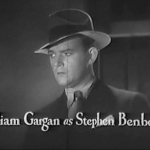 |
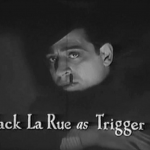 |
| Temple Drake Miriam Hopkins |
Stephen Benbow William Gargan |
Trigger Jack La Rue |
| Released by Paramount Pictures | Directed By Stephen Roberts |
||
Proof That It’s Pre-Code
- I’m going to go ahead and just quote Thomas Doherty’s Pre-Code Hollywood on this one:
The Story of Temple Drake is a model of pre-Code immorality in at least three ways. First, the open questions posed by the narrative would neither be raised nor answered under the Code. Did Temple enjoy the rape? Did she willingly prostitute herself for Trigger? The inquiries alone are invitations to profane thoughts, occasions for sin at the moment of utterance. Second, the questions are truly open, unanswered, not closed by the narrative. The degree of Temple’s complicity in her rape and culpability for Trigger’s murder is unresolved. Third, the one lesson taught by the story of Temple Drake is the poetic justice in unlawful vengeance. In being raped, Temple receives just comeuppance for her sexual teasing for advertising promiscuity while being ‘just a fake’. The rapist-murderer Trigger is the agent of an unholy but just retribution, an avenging angel who shows this girl that she can’t have her cake and eat it too. If Temple doesn’t enjoy her degradation, the audience should.
The Story of Temple Drake: Shame, or Lack Thereof
I’ll go ahead and warn you now, this is one where it’s impossible not to get bogged down into the details. And The Story of Temple Drake, if you haven’t figured it out from just the scrawl above, is one of the most sordid, weird and deeply fascinating films of the pre-Code era.
Set in the small town of Dixon somewhere in the deep fried portion of the South, Temple Drake is about the youngest scion of the Drake family. It’s a distinguished bloodline, with grandfather being the most respected judge in the county, but there are rumors about Temple, that the blood in her is too hot, and that trouble is coming, in one form or another.
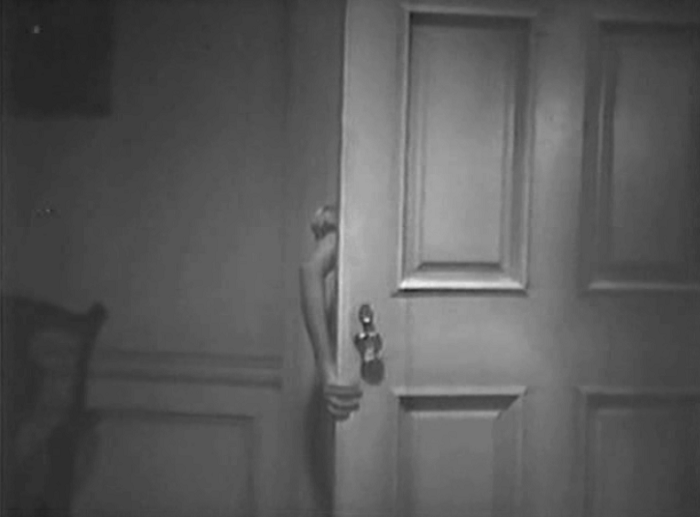
Preparing to make love to a doorknob.
Temple Drake is a flirt, or, to convey that in a more modern parlance, a cocktease. Our first sight of her is just such a hint, her hand delicately pulling on the inside of the door while her whispers playfully beg a suitor to let her go inside and get some sleep. She’s gotten him riled up, but finds it more fun not to seal the deal. She won’t even enter the frame for the audience– we, too, are being messed with!
Once inside she’s confronted by her grandfather, demanding to know where she’s spent the night; she deflects by asking him help her unhook her dress. Whether you read this as a mere diversionary tactic or Temple using sex to get her way– incestuous as it may be– either will help inform the rest of the movie. The boundaries here are tenuous… and highly illicit.
Temple’s being courted by do-gooder district attorney Stephen Benbow. Besides having a highly goofy name, he suffers as a lover for simply being too dull. We see one scene of him spending his evening around the fire with his decrepit grandmother, content to listen to her ramble on about those Drakes and how they have ‘fire in the blood’ or such nonsense. He couldn’t look any more prematurely domestic if his chair rocked.
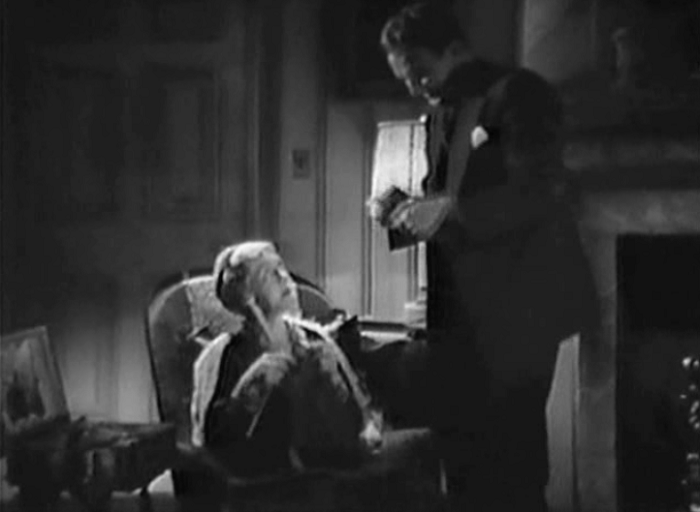
“Gee whiz, Granny, here’s your yarn.”
And so Temple must refuse his offers of marriage. Her life is one of finding the line between good and bad and doing a balancing act on it, and there’s no room for auntie there. The last time she refuses Benbow makes her so distraught that she rushes out of the party with a particularly hammered individual to hit the local moonshiners. This results in a car crash, and the movie verges from the domestic to the surreal.
Because no film gets to be called ‘Southern Gothic’ without one dress-soaking thunderstorm, just such a thing breaks out. Drake spies into the moonshiner’s dilapidated mansion (the same one shown under the beginning credits) and finds a crew of rowdy drunks, some blind, some clearly mentally deficient, and one who chomps on a cigarette. He’s got eyes that spell trouble; that’s Trigger.
The way Jack La Rue plays Trigger is killer, plain and simple. And, uh, not just because he’s a killer. He’s a model of impassivity. There are no broad smiles after a murder, nor does he leer at Temple with exaggerated lust. He’s a presence, a force. His looks are completely carnal, like a man who only sees what he wants in the world. His powerful body follows closely behind to make sure he gets it.
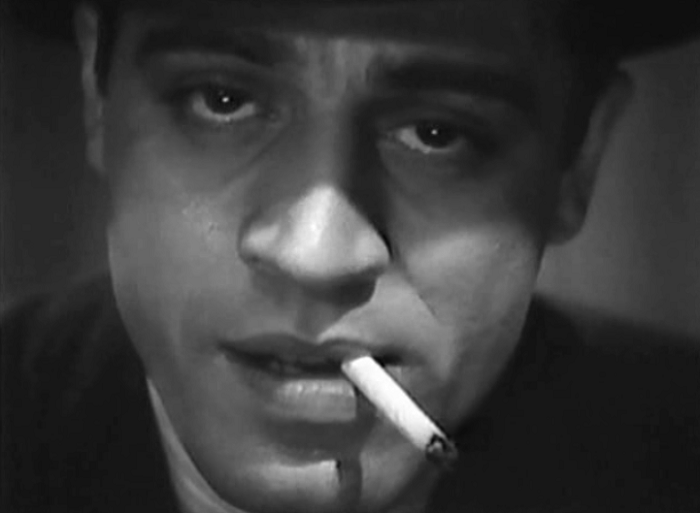
Lumbering.
Temple enters the house, where the group of men each take turns either making a pass at her or clearly implying that they believe making a pass takes too much time. Horrified, she’s sheltered in her room by Ruby (Florence Eldridge), the only other woman there and tougher than dirt. After the men keep busting into Temple’s room to get a view of her in her delicates and then further press their ideas about sexual congress, she’s snuck out into the barn among the shucked corn. She’s guarded by Tommy (James Eagles), the only redneck among them with any sense of kindness to him.
But what I said before about Trigger is true. He sneaks into the rafters of the barn and lowers himself into the corn crib. Temple, who sees him enter, is either too petrified to scream or perhaps too intrigued. When Tommy opens the door upon hearing a noise, Trigger shoots him point blank and makes his way for the frozen woman.
If you were thinking at this point that The Story of Temple Drake is notorious merely for its rape scene, you ain’t seen nothing yet.
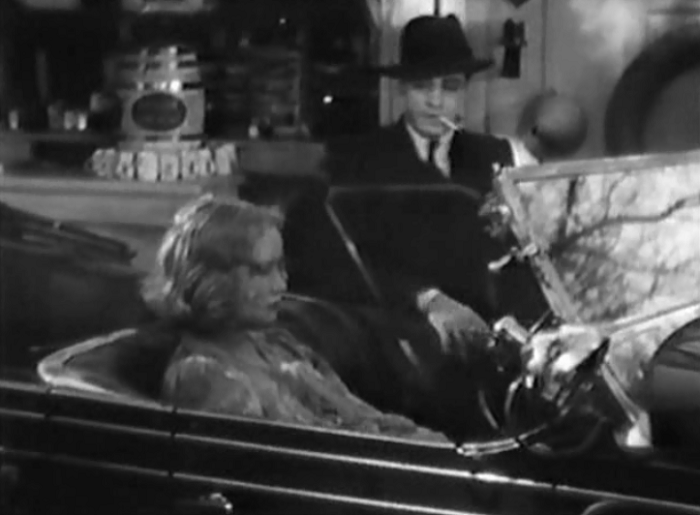
The day after.
Spoilers.
As it turns out, our next scene with Temple and Trigger shows the two of them on the run. Temple is frozen, but it’s not out of fear; she’s chosen to run away with Trigger to ‘the city’. Her face doesn’t have a look of trauma, exactly, but maybe something along the lines of a deep seated realization. What’s happened has destroyed her illusions about life forever, one way or another. Trigger takes her to a motel room and keeps her there. Or, more likely, she just happily stays.
Back in Dixon, her grandfather assures everyone that Temple’s visiting family in Pennsylvania. Meanwhile, Benbow sets to work on the defense case for moonshiner Lee Goodwin (Irving Pichel) who is accused of Tommy’s death. He refuses to speak out for his own defense because he knows that Trigger will come after him. Benbow, for being as straightlaced as he is, is also extremely determined. He heads into the city and finds Trigger, and, in his stead, Temple.
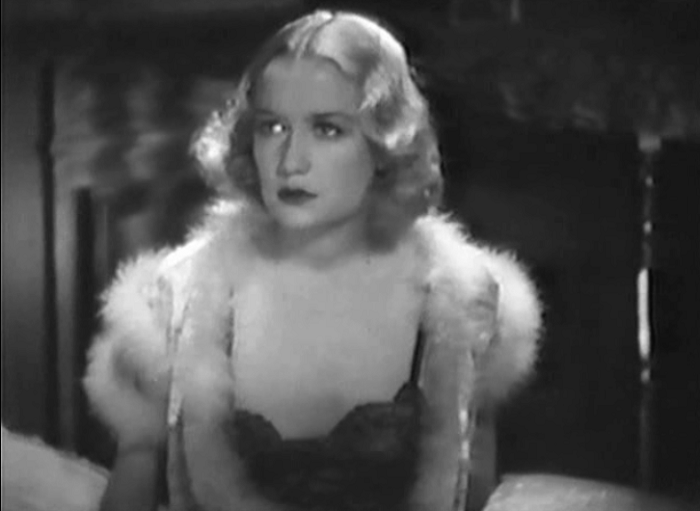
“Whoops, got caught in my lounging around clothes.”
The confrontation between the three is perfect in just how much is conveyed in looks and pauses. Temple’s negligee speaks volumes enough, and Benbow’s heartache upon entering the dingy hotel room is palpable. To cap it off, Temple throws herself onto Trigger when she notices him going for his gun. She saves Benbow’s life, but only further proves whatever thoughts he may be having about how low she’s sunk.
After Benbow leaves, Trigger brags about his hold on Temple. But he doesn’t see she’s in the other room packing; she’s realized that it’s time to face the music to her family and friends. Trigger becomes enraged, feeling that she led him on by making him think there were emotional connections in their relationship that didn’t just begin and end with their reproductive organs. There’s a tussle; Temple shoots Trigger dead.
Temple returns home in time for the final witnesses in Goodwin’s murder trial. Benbow is told in no uncertain terms that if Temple takes the stand, she will lie– or she may just confess to killing Trigger. But if she doesn’t take the stand, an Goodwin will go to the death house for a crime he didn’t commit.
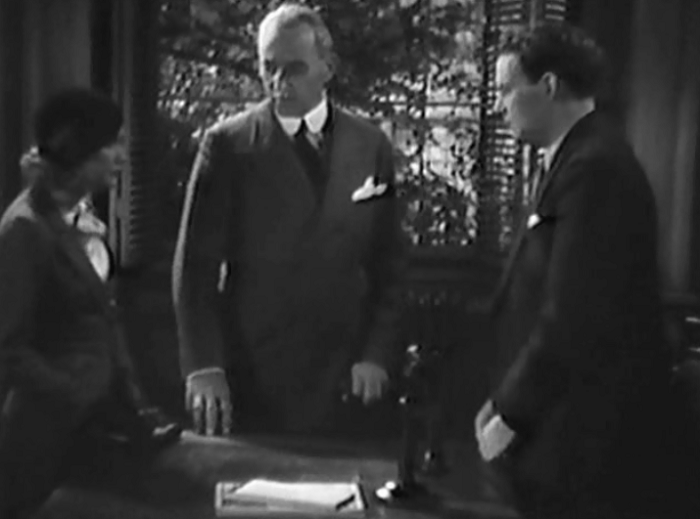
This is a quagmire wrapped in an enigma wrapped in some very damaged undergarments, that’s for sure.
The scene at the end of the recess where Temple essentially gives Benbow his choice is only a few seconds long, but William Gargan does some amazing work here. Most of the film he’s done an excellent job between playing Benbow as a guy who possesses a great passion for his job and someone whose external state betrays almost none of that. It’s only when his sense of justice is wronged does he ever snap out of his pleasant state of neutral, and by the end of the picture he’s just spiraling. In a few seconds walk from the judge’s chambers to the center of the courtroom, he has to choose between damning an innocent man and the life of the only woman he loves.
And, because of who he is, he calls her to the stand. It’s difficult for Benbow to get the questions out, but he appeals to Temple’s sense of history and the dignity of her family’s name. Though he sits back before asking the fateful question, she demands to answer it anyway. She confesses where she’s been, and admits to killing Trigger.
Temple collapses onto the floor in the form of the crucifix. She is picked up by Benbow, once again recreating the famous depiction of the Virgin Mary holding Jesus like we saw in The Miracle Woman. Equating Temple’s confession with the acts of Jesus– hell, she doesn’t even renounce her philandering, but merely confesses to it– is, well, blasphemy at the very least.
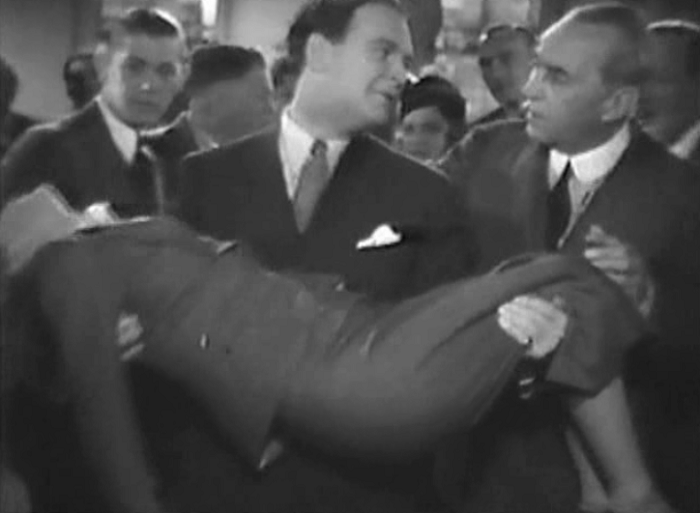
Temple Drake fainted for our sins of lust and desire.
She’s sacrificing her reputation for an innocent man, sure, but the whole bit couldn’t help but remind me of Paul Verhoeven’s The Fourth Man (1983). Verhoeven’s mission in making that movie was to insert as much symbolism as he could manage into the film under the belief that it would get him a free pass from critics. One wonders if Drake‘s director Stephen Roberts felt that by inserting weighty symbolism into such a sordid tale would somehow class up the film’s content, giving it an aura of sophistication, even if the symbolism feels unearned.
Or, hell, it may be sincere, saying that a woman confessing to less-than-saintly desires deserves pity and elevation. She’s sacrificed her social standing, her dignity, and her family name to do The Right Thing. Surely she deserves not just pity, but as Benbow implores her grandfather, for everyone ‘to be proud of her’. And it’s not like the film isn’t filled with other metaphors and nuances, from the broken down mansion in the film’s credits which indicates Temple’s life trajectory, or Ruby’s baby being kept in the wood box to keep the rats out– much like Temple, a box can only do so much. The movie clearly wants to expand itself beyond its own story to take on a sense of timelessness while often slipping then-common film narrative techniques to become more dreamlike. The touches I mention give the film a sense of yearning for finding some deeper truth about human motivation and desire and tying it all together in a few final, offbeat moments.
(Or I could be reading too much into it, but I’ll be damned the day I admit to that!)
The Story of Temple Drake feels like an excellent time to talk about censorship, since this film is a turning point for it. William Faulkner’s Sanctuary had been dubbed ‘unfilmable’ by the Hays’ Office, though that didn’t hold back the cash-strapped Paramount. The studio was forced to change the title from the original (notably the name of the novel doesn’t even appear with Faulkner’s credit in the movie, instead saying ‘Based on A Novel by’), but by keeping the main character’s name and putting it front and center, it wasn’t hard for the movie-going public to put two and two together.
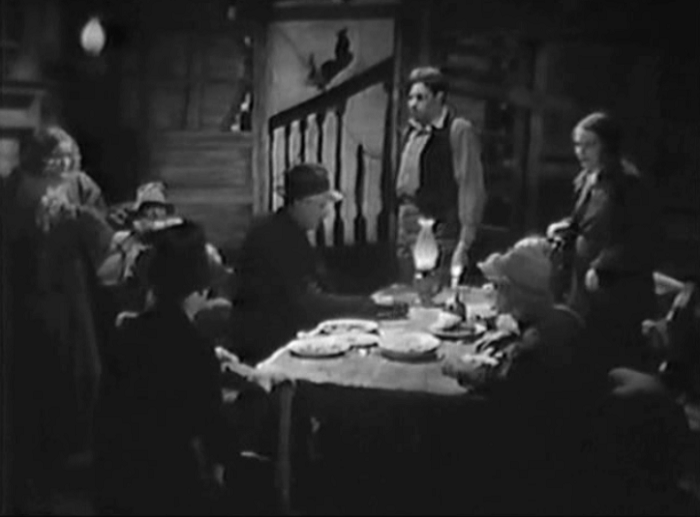
It’s also the story of ‘the smelliest party ever’.
The content still had to be censored– read a summary of Faulkner’s Sanctuary and you’ll know that it would be hard to make that into a movie today without running head first into a hard NC-17 rating. What’s weird is the ways it had to be censored. Censorship coming from the Production Code Administration functioned as a mediary between the artistic strides (and baser impulses) of the movie studios and public morals organizations like the Catholic Legion of Decency. Paramount wanted to make the movie, so the Code Office had to find ways to make it palatable; it wasn’t until mid-1934 until the Office could just tell Paramount ‘no’ and the studio would have to live with it.
Again, back to the Faulkner original: the rape in the corn crib is actually played quite differently, as Trigger (named ‘Popeye’ in the book, changed for copyright reasons and because, hey, Trigger is a great euphemism) actually conducts the act with the aid of one of the corncobs. In the book he is impotent, and his slavery of Temple is an act of control. He takes her to a brothel and prostitutes her out, watching the ensuing couplings to satisfy both of their sexual appetites.
Youuuuu can’t show that in a 1933 movie. So changes were made– no impotence, no brothel. Because of censorship, the book’s impotent pervasive evil becomes on film a smoldering insatiable sex object. The corncobs, in the book a tool, become a symbol of virility. This kind of censorship can be called making the best out of a bad situation, but still illustrates the limits of censorship as well.
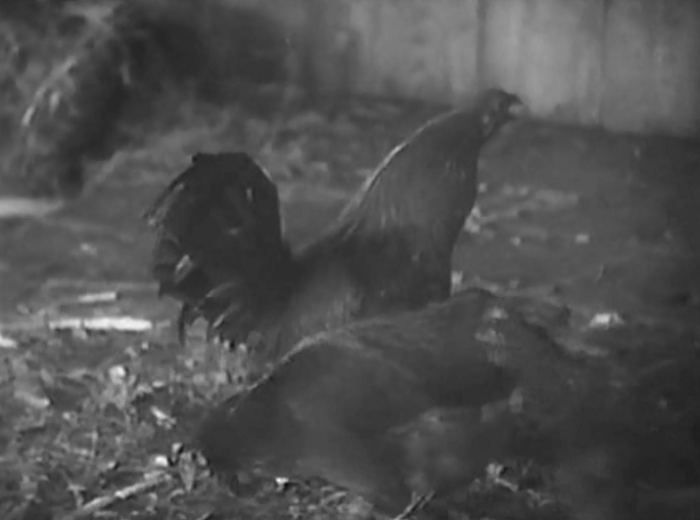
There’s also this shot of a rooster from shortly before the rape scene, which means that they at least got away with showing a cock in the movie.
That also leads us to the film’s finale. Without getting into specifics, Sanctuary takes a notably downbeat tack of Temple lying, allowing the innocent Goodwin to die, and Trigger being executed for a murder he was innocent of. In the movie, again, she couldn’t get away with her life of illicit love, even if she didn’t kill Trigger, and Trigger really couldn’t get away with killing Tommy and raping Drake, even if he was hung later on.
The book seems to be arguing (from my limited experience with it) that being upper class allows you to be lower class for a while without punishment, while the poor suffer for these transgressions. However, because the movie must tie up loose ends, Temple’s confession is elicited by appealing to her class. Where the book says that class will damn you, in The Story of Temple Drake, it’s drawing on a family name and honor that can elevate and redeem you. Crazy, right?
Censorship pressure from both the Code Office and the Legion of Decency wasn’t just about cutting out dirty bits or eliminating blue jokes. Often censorship was done under the belief that it was elevating the material; good honest movies made good honest people. Showing sin and vice is fine as long as its punished, but Temple Drake is far too effusive for that. The film, marketed for its lurid content and its connections to an even more lurid novel, spit in the face of what the censors stood for, and surely helped provoke the reckoning that lead to the Code Administration having a stranglehold on American cinema for three decades hence.
End spoilers.

“Spit in their face? Lil ‘ol me? … sho’nuff!”
For all its notoriety, I found it difficult to pin down The Story of Temple Drake. So much of the film is contained in ellipses, as many actions and characterizations must be inferred rather than spelled out to make them palatable for the screen. It’s not so much of a drama, but a character study of Temple Drake, a woman whose desires and needs we can only read in Miriam Hopkins’ terrified expressions and trashy (and trashed) negliges.
I mentioned above that it’s impossible not to get bogged down in the details of The Story of Temple Drake, and that may be because that’s where the weird, twisted heart for the story lies. This can be aggravating at times, sure. The film heavily relies on closeups of Hopkins and La Rue, their faces filled with fear, loathing or desire. It makes Temple Drake less of a drama and more of a mood piece for much of its middle section. As a movie, it feels like a disjointed intersection of symbolism and outrage, but provides so many dead ends and turnabouts that playfully nudge at the attentive watcher. For all its flaws, imposed or not, it remains a fascinating and indisputably unique experience.
Gallery
Hover over for controls.
Trivia & Links
- As mentioned above, the movie is based on William Faulkner’s Sanctuary from 1931. Although not technically a remake, there is an awful 1961 film version of the book starring Lee Remmick. It’s even more obscure than today’s movie, and only remarkable in how it changes the story’s message into one about how sometimes black women must sacrifice their lives to save those of pretty white girls. It’s great, really.
- Jack Vizzard’s autobiographical book on the life and times of the Production Code, See No Evil, mentions this early on:
Of all the pictures that were occasionally cited as having brought on the Code single-handedly, the two two most frequently mentioned were The Story of Temple Drake and Convention City. They can be taken as symbols of a small hoard of other films that continued to be thrown, like pies, into the face of a public suffering in the throes of the deep Depression.
[…]
Be that as it may, the proof of all this pudding is the fact that the motivation of her repentance was a cause of some anguish to the Code people in those early days. The girl never came back to a correct set of values. She was lauded and made to seem sympathetic not because she disavowed her black experience, but because she wanted to restore what she had withdrawn from the bank of ancestral integrity.
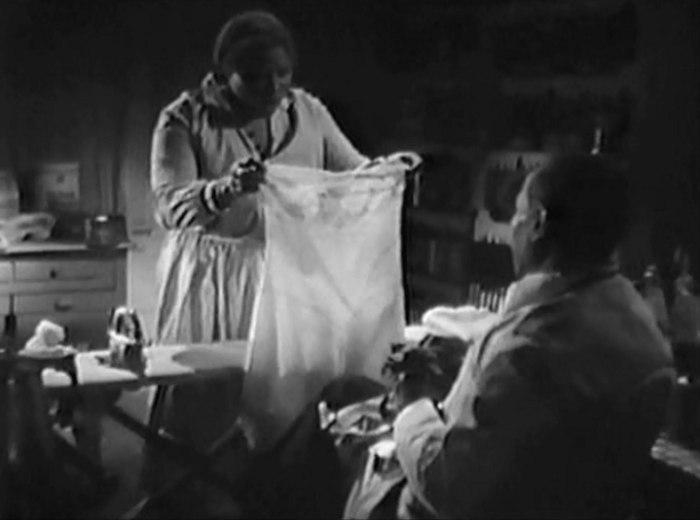
One scene has her family servants say that Judge Drake would know Temple better if he did her laundry. As someone who does my wife’s laundry, I will agree with this statement.
- The Acidemic Film Blog identifies The Story of Temple Drake as the first David Lynch picture, and pegs Temple’s troubles as an insidious form of Stockholm Syndrome. The review is excellent and touches on everything I did (and much more) in way fewer words. An excerpt about the film’s atmosphere:
The deliberately exaggerated, stilted, somnambulistic and theatrical manner in which the actors speak and move might be construed as bad theater but in the context of the era was probably a deliberate distancing effect, to equate the sequence more with dreams than reality (i.e. Lynch’s room with the dancing dwarf where everyone talks backwards), and thus spare the viewer from taking it all too seriously and going home traumatized (for viewers of that era, this was probably the equivalent of I SPIT ON YOUR GRAVE). The constant cutting to Drake’s horrified reactions smacks of cheap exploitation after awhile (it’s an old editing trick to cover up mismatched footage) but as a result they conjure up the pungent aftertaste of those old Dwain Esper road show pictures like MANIAC, or our associations of bad video dupes and poverty row dinginess with sleazy violence… and we get a real sense of Temple’s feeling completely trapped in this squalor, as we remember feeling trapped in our parent’s houses as kids, watching these old movies on video over and over to pass the time, anxious to escape the tedium of suburbia, yet terrified by the wildness waiting in the big city.
- Cliff at Immortal Ephemera talks about how the film had initially cast George Raft as Trigger, with the actor resisting and calling it ‘career suicide’. (And he may have been right!)
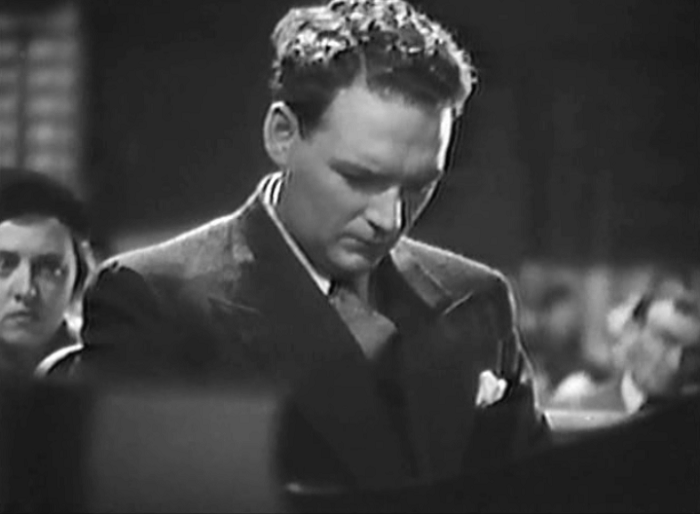
I love Benbow’s attempts to elicit a confession from Drake on the stand, and then finally giving up before asking the big question. A different movie would have had Temple confess before he decides to stop the questioning, but this one knows him too well.
- In case you couldn’t read the graffiti that Benbow finds on the bathroom wall at one point, here you go: “Temple Drake is just a fake / she wants to eat and have her cake”.
- On the same note, the actor who plays Drake’s grandfather in the movie is named Guy Standing, which I will never stop finding hilarious.
- The original review at The New York Times names it as ‘a highly intelligent production’.
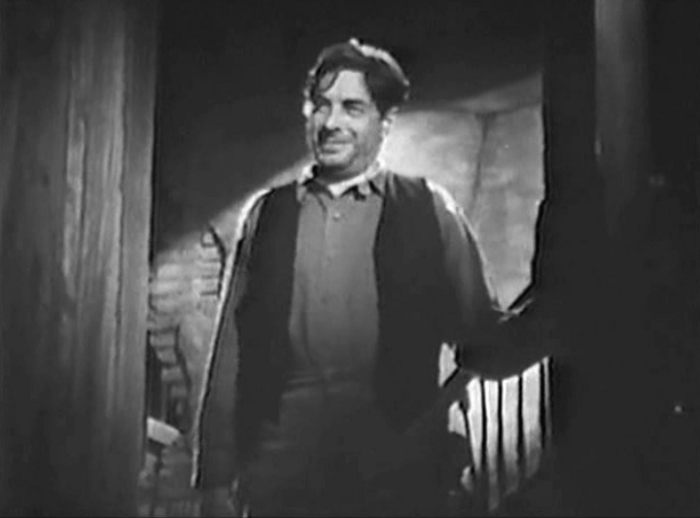
This is Irving Pichel as Goodwin. You may remember Pichel from The Cheat.
- Mick LaSalle in his book Complicated Women calls this one out for Temple’s sexual energy and how she gets away with murder by the end. He explains about Hopkins:
When the prosecutor asks where they might find this Trigger, she answers, “You can’t… You’ll never find him. I killed him.” And then she faints. With another actress, this might have been pure melodrama. But Hopkins doesn’t play the usual emotions nor does she ask for sympathy. She plays Temple merely as terrified, morally clueless, and odd. We watch as her senses overload and then shut off.
- Frank Miller, in his book Censored Hollywood, notes that the film’s censor, in desperation to recompense the acts being shown, “tried to get Paramount to add an epilogue showing Temple as a welfare worker in China.”
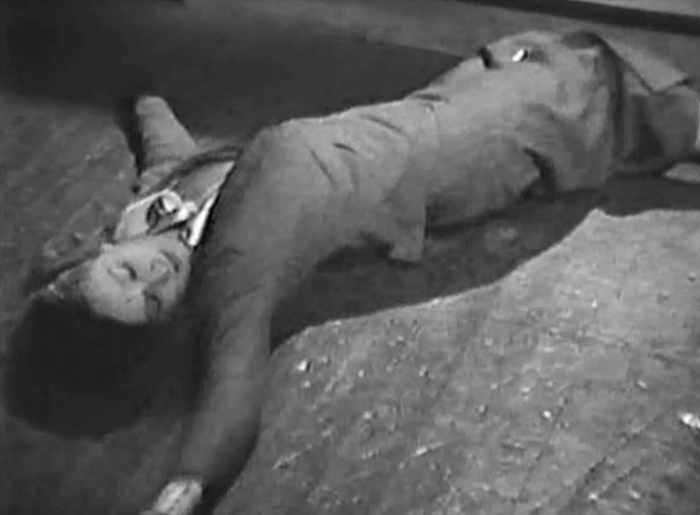
And so we say so long to Temple Drake, whoever she was.
- Mondo 70 compares the movie to The Texas Chainsaw Massacre (and rightfully so, I think). They also have this poetic ending, too nicely written not to quote:
[E]ven a bowdlerized, happy-ended version of Sanctuary was way too strong for the Legion of Decency types who already had enough clout to demand cuts to Temple Drake. The fact that a major Hollywood studio would even think of taking on Sanctuary, when it certainly wouldn’t just two years later, is what we love about the pre-Code era, even when we admit its limitations. Better a truncated Sanctuary in 1933 than none at all, which is what we would have gotten in 1935. There’s a poignancy to the incompleteness of pre-code cinema, whether on the individual level of variously compromised films or the overall sense of the period as a dead end or a path but partially taken before the road was blocked. Had The Story of Temple Drake appeared last year, it would have been condemned as a travesty on the level of the Demi Moore version of The Scarlet Letter. As a product of 1933, it deserves a lot of the credit it gets from posterity.
Awards, Accolades & Availability
- This film appeared in the Wikipedia List of Pre-Code Films.
- I guess ‘surprisingly obscure’ would be a misnomer for a film so filled with rot and vice. I assume there’s either a rights issue or a problem with prints that keeps this off home video [UPDATE: Lou Lumineck said basically that Fox is sitting on releasing this film on video, which, if you follow pre-Code at all, isn’t much of a surprise since Fox sits on enough movies that they should be able to reach the moon soon], because I’m sure this could still move quite a few units on its reputation alone. As it is, your best bet for getting a hold of it is on YouTube, though it may be worth the trouble to find a better looking version somewhere else.
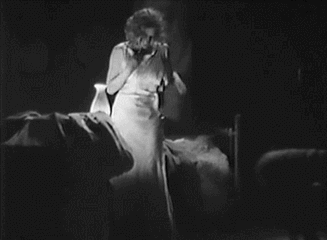 |
Comment below or join our email subscription list on the sidebar!Home | All of Our Reviews | What is Pre-Code? |

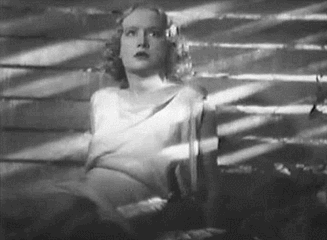



16 Comments
La Faustin · May 9, 2014 at 1:48 am
Yay! [crashes roadster]. You missed one honey of a link: http://dcairns.wordpress.com/2009/05/08/jack-la-rue-sexual-outlaw/
One thing I love is that, bracketed as it is between a concussion and a swoon, the whole adventure could be read as Temple’s fantasy.
Danny · May 10, 2014 at 8:19 pm
*smacks forehead* Man, I had that link open, too. Must have closed the tab on accident. :/ Love Shadowplay, though, great blog through and through.
It’s interesting you note that the film could be Temple’s nightmarish fantasy– perhaps a sudden consideration of where her path is leading her, good or bad.
Andrew Gilmore · May 9, 2014 at 7:59 am
Even though I’ve been studying Pre-Code movies and watching tons of them for almost a year, this is one I just can’t bring myself to watch. It sounds sickening.
Danny · May 10, 2014 at 8:23 pm
It’s definitely not applesauce, that’s for sure. Too bad, I’d like to see your class’ reaction to this– a lot of pre-Codes are surprisingly frank, this is one of the few I can think of that could easily offend its viewers. It’s not easy to digest, and pushes every boundary it can. It’s fascinating… but definitely not for everyone.
Judy · May 11, 2014 at 6:34 am
I’ll be back to read this after seeing it at the BFI at the end of the month, and will comment then. Can’t wait!
Danny · May 11, 2014 at 8:08 am
Heck, I’m just excited to hear from someone who sees a good print of it. Have a good time!
jd bandy · May 20, 2014 at 9:41 am
My memory is too weak to cite details, but I think if you watch “TSoTD” again with your 3rd pre-code eye open you realize Trigger *did* stash Temple in a ho house. I seem to remember the fellow inhabitants out in the hallway in clothing that isn’t revealing but is definitely telling in design. I’m not alone in that interpretation, as a casual Google search turns up others: “Trigger kills Tommy and attacks Temple, and then he and a shellshocked Temple drive over a county or two and take up residence at Miss Reba’s House of Ill Repute, Inc. It’s interesting to look at the music on the soundtrack at this point — up until now, Temple’s trials have been punctuated by a nondescript orchestral score, but once we get to Miss Reba’s all we hear in the background is a honky tonk piano. And somehow, it makes things seem even more nightmarish” http://www.classicmoviehub.com/article/13015/
As to the corncob that ruined her for other men, I can’t remember whether it was LaSalle or Vieira, but someone revealed the corncob was such a sore point, so to speak, that it was censored out of existence before the project even began. The audience is not supposed to even see a corncob in the crib. Of course, as you pointed out, they were all supposed to know, from the notoriety surrounding “Sanctuary.”
Danny · May 20, 2014 at 8:45 pm
Honestly, a lot of reviews place her in a house of ill repute, but I gave the censors the benefit of the doubt there. I believe I read the censorship notes where they were essentially begging the filmmakers to make it not look like a brothel. Of course, it still does in some regards (how many houses have an old lady like that hanging around?) and without a doubt audiences familiar with Sanctuary don’t have to do a whole lot of work putting two and two together, but I think the ‘hotel’ angle, at least in the film, holds a little more water.
I do think movies should function on their own regardless of the source material and be judged that way– I haven’t read Sanctuary and hadn’t read about it before sitting down with the movie, so my review is mostly my thoughts coming in cold. The censors desperately tried to remove the salacious context; how well did that work? Well, their machinations made the movie into a different beast than the book, and despite their best efforts, their desires only pushed the tale in a completely different direction, but one just as scandalous.
I think it’s a fascinating contradiction, and more interesting because of that. I saw several of the ‘well, it happened like this in Sanctuary so this must be what must have happened in the movie’ articles and admit that they rubbed me the wrong way. The movie’s ending in particular is nowhere near the book’s conclusion. The censors (and possibly even the filmmakers) saw some punishment had to be leveled at Temple, but the solution they came up with is brilliant in a twisted way as it made her appear repentant but not for the sexual desire that got her in trouble in the first place. I find the film fascinating in the way it twisted Sanctuary to try and make something that would light up the box office in a time where they could barely make it at all. Everything about the existence of the movie is fascinating.
Hazel · June 1, 2014 at 10:35 am
I just saw this at the British Film Institute and thought it was great. Miriam Hopkins just cements her place on my list of unjustly forgotten actors.
I’m so glad that I had little knowledge of the film’s background and source material beyond a sense that it was notorious. And so to discover the significance of the corn cobs I spotted is rather disgusting, I must say.
Just a couple of things: Stephen is sitting with his aunt (aunt Jennie, to be precise) in the knitting scene not his grandma and you’ve captioned Irving Pichel as Steve in one of your images.
Great blog, by the way.
Danny · June 1, 2014 at 4:44 pm
Thanks for your kind words (and for pointing out the typos! those are fixed now). I’m jealous, I wish I could get to see that on the big screen. I don’t know if I could look at anyone else in the audience afterward, though.
terence · January 30, 2016 at 9:35 am
I’ve always understood that Miriam Hopkins hated this movie and that, when she was the guest at a revival house or festival screening, she said something to the effect of needing to take a shower after sitting through it. Personally, I loved it though not as much as the Faulkner book. The book is so radically different from the movie — besides the corncob, Temple never takes the stand and Godwin is tried and lynched for her rape when the rednecks burn down the courthouse. (The part about the corncob is revealed during the trial.) I love the lurid rape scene in the movie. That scene has the feel of the Universal horror films from the era. It’s been a couple of years since I saw SOTD. I’m trying to remember if Ruby’s malnourished baby is kept in a cardboard box on the floor — a very vivid detail in the book. Faulkner used that to establish the fact the Trigger (Popeye) was hiding out with the poorest of the poor among the rural white folks. FWIW – Faulkner maintained that the book, which was his first successful novel, was actually intended as exploitation or at least, in his words, “a potboiler.” A dowager at some Ole Miss literary function, believing his work to be roman-a-clef, asked him what part he played in Sanctuary. Faulkner replied, “I was the corncob.”
Danny · February 16, 2016 at 8:21 pm
Wow, that’s a hell of an ending to your post. And, yes, the baby indeed remained in the box to keep it safe from the rats– it’s a hell of an image!
Ida Tarbell · March 18, 2016 at 8:58 am
I downloaded the whole 7 parts off youtube and put them on a 652 meg cd last night. I’ve been in love with miriam hopkins ever since I learned she and Bette Davis were in a major battle as top movie actress of the thirties. Hopkins was too old to play femme fatales by 1940 and so lost the battle with Davis. Hopkins quickly started playing old lady characters. These roles shortened her career. I have many of them on dvd/cd.. Her best role is Becky Sharp from Thackeray’s Vanity Fair. Hopkins played the lead in it. Faulkner’s Sanctuary was a far deeper examination of Temple Drake. There’s a 1962 movie version that I have from youtube. Faulkner opened some seamy themes in his book but though he tried to fix the book after first writing it as plain kitsch, he never quite succeeded in making it a masterpiece. I wish he’d tried harder. He had all the ingredients. See Faulkner’s Requiem for a Nun, story and later the film, made in 1975 with Sarah Miles as Temple seven or eight years after the rape by Popeye, Faulkner’s villain in the book.. Faulkner wrote a short story followup to Temple Drake’s life years after he’d written the original Sanctuary, a book I’ve read a couple of times, Requiem for a Nun. The 1957 the Outrage with Paul Newman and Laurence Harvey was supposedly based on Kurosowa’s Rashamon, but seemed to be stirring the ashes of the Temple Drake story. Rashamon became a simile for describing different views of the same event after Kurosowa’s film made the little known Japanese short story famous.
ramonjurado01 · August 13, 2018 at 1:42 am
was it released on home video at ANY time?? VHS?
Jay Smithee · August 10, 2019 at 11:17 pm
Re: the 1961 movie, it actually combined the storyline of Sanctuary and Faulkner’s sequel, Requiem for a Nun. The villain in the 61 film, “Candy Man”, is a combination of “Popeye” and “Red” from the first novel and Red’s brother in the second novel, “Pete”.
Dale Freeman · October 3, 2019 at 8:44 pm
Criterion is releasing it on Blu-ray in December, 2019 with lots of extras.
Comments are closed.